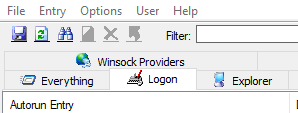23
6
I am using a computer with Windows 10 and, as a normal procedure to reduce the boot time, I accessed the Task Manager and checked what was "Enabled" during the "Start-up".
When I opened that tab, I saw a program called "Program", without Publisher information, which I have now disabled.
After that, I went straight to the Control Panel -> Programs and Features, in order to find out what the program is and to delete it; however, nothing with that name appears.
Given that, assuming that I don't know since when do I have that program on this computer, how can I know what this program is, so that I can decide on whether to remove it or not?




7Go to Microsoft Downloads, SysInternals and get Autoruns 64-bit. Download it, install it and run it and see if it shows you the program on your computer. Yellow highlighted sections in the Autoruns display are errors and can be deleted. – John – 2019-11-05T12:00:18.490
3You can also display more columns in Task Manager, by the way, including “Startup type” and “Command line”. Just right-click any column header. – Daniel B – 2019-11-05T12:20:37.933
1@Persistence Can you elaborate? Is it that it is easier to find this information on Arch, or is it that something like this would not occur on Arch? – Abdul – 2019-11-06T13:51:38.490
@Abdul think my comment got deleted... Fair enough tbh but unless you've installed some strange packages nothing will autorun unless you tell it to by enabling it as a service with systemd or adding it to a small handful of startup scripts. Nothing really happens by accident in Arch, you've basically got complete control – Persistence – 2019-11-06T15:01:29.287
Is there an entry for it in
C:\ProgramData\Microsoft\Windows\Start Menu\Programs\StartUp? – TylerH – 2019-11-08T16:26:36.317